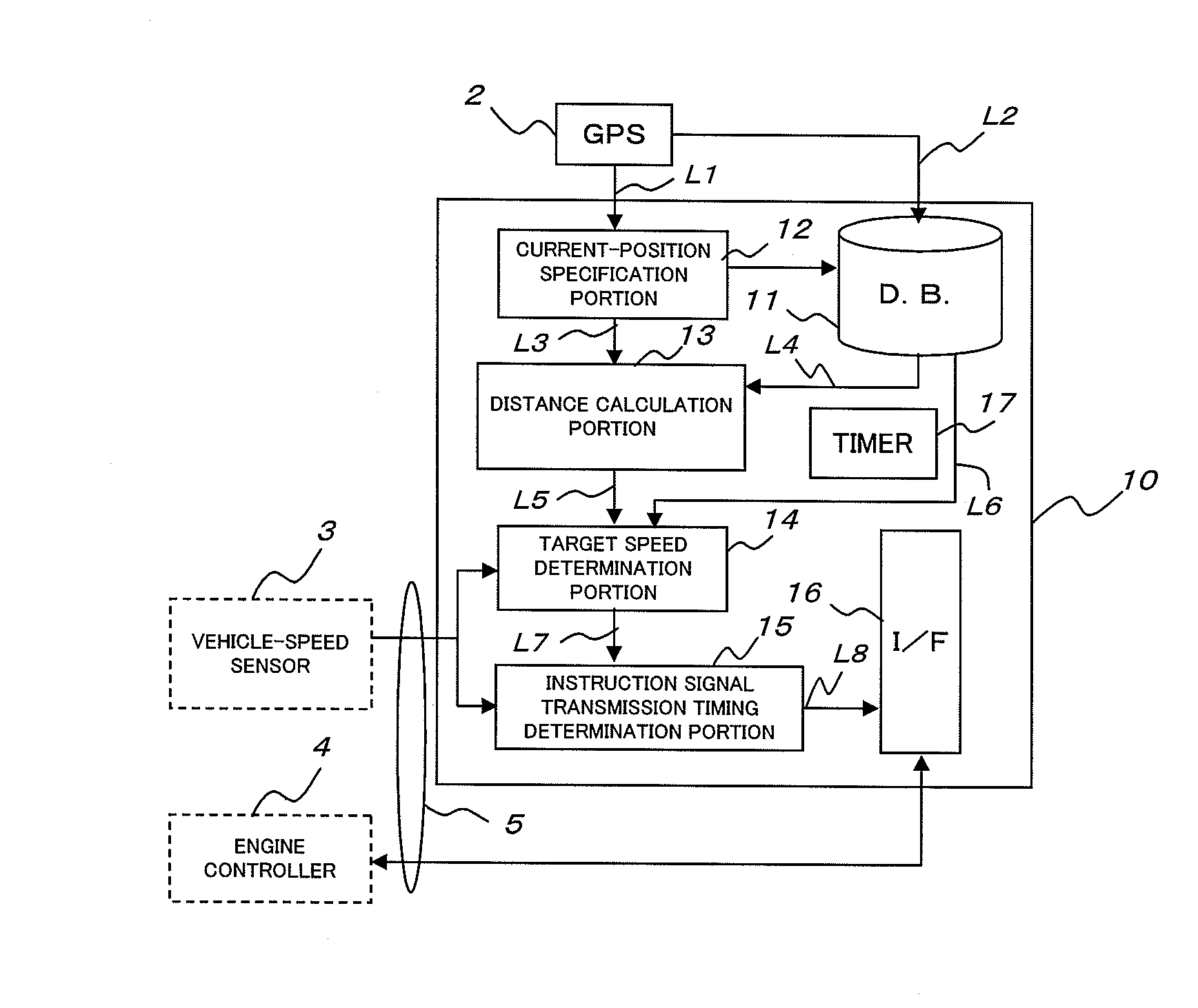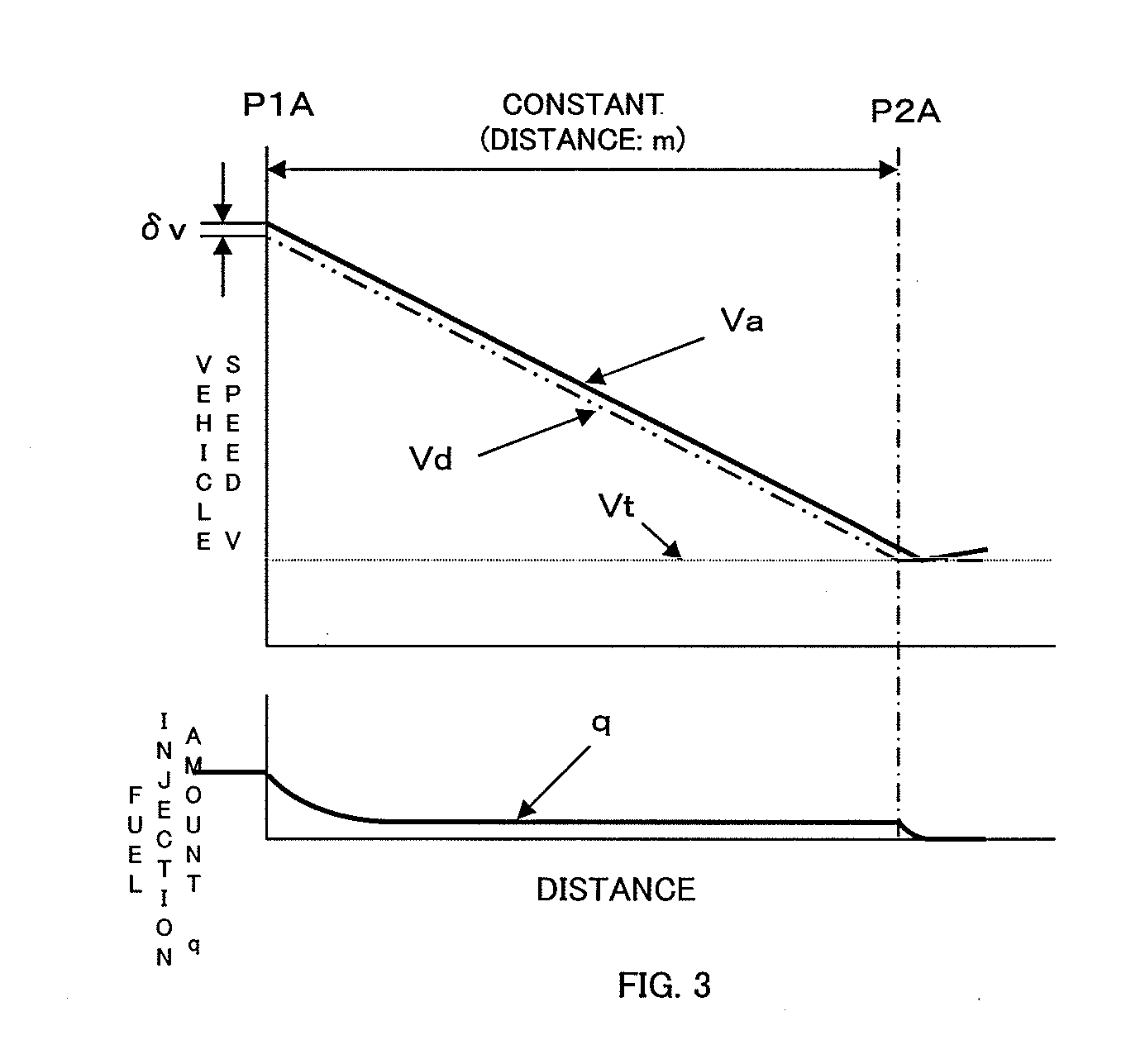Fuel-efficient driving system
a driving system and fuel-efficient technology, applied in the direction of braking systems, electric control, instruments, etc., can solve the problems of difficult to reduce the speed to a requested vehicle, vehicle behavior becomes jerky, and the gradient at an actual traveling position is not necessarily constant, so as to achieve the effect of reducing the braking force, improving the fuel efficiency of the vehicle, and avoiding energy was
- Summary
- Abstract
- Description
- Claims
- Application Information
AI Technical Summary
Benefits of technology
Problems solved by technology
Method used
Image
Examples
Embodiment Construction
[0039]An embodiment of the present invention will be described below by referring to the attached drawings.
[0040]In FIG. 1, a fuel-saving driving system according to the embodiment of the present invention is indicated in entirety by reference numeral 100.
[0041]The fuel-saving driving system 100 has a vehicle 1, a GPS 2, which is a vehicle position specifying device, a vehicle speed sensor 3, an engine controller 4, an in-vehicle communication network 5, and a control unit 10, which is control means of the automatic fuel-saving driving system.
[0042]In this embodiment, the position of the vehicle is specified by using a Global Positioning System, and the GPS 2, which is a vehicle position specifying device, receives position information or the like from a satellite of the Global Positioning System.
[0043]The in-vehicle communication network 5 connects the control unit 10 to the vehicle speed sensor 3 and the engine controller 4.
[0044]FIG. 2 illustrates a construction of the control un...
PUM
 Login to View More
Login to View More Abstract
Description
Claims
Application Information
 Login to View More
Login to View More - R&D
- Intellectual Property
- Life Sciences
- Materials
- Tech Scout
- Unparalleled Data Quality
- Higher Quality Content
- 60% Fewer Hallucinations
Browse by: Latest US Patents, China's latest patents, Technical Efficacy Thesaurus, Application Domain, Technology Topic, Popular Technical Reports.
© 2025 PatSnap. All rights reserved.Legal|Privacy policy|Modern Slavery Act Transparency Statement|Sitemap|About US| Contact US: help@patsnap.com



